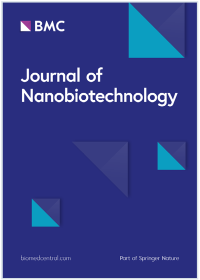Bio-orthogonal click chemistry strategy for PD-L1-targeted imaging and pyroptosis-mediated chemo-immunotherapy of triple-negative breast cancer
IF 10.6
1区 生物学
Q1 BIOTECHNOLOGY & APPLIED MICROBIOLOGY
引用次数: 0
Abstract
The combination of programmed cell death ligand-1 (PD-L1) immune checkpoint blockade (ICB) and immunogenic cell death (ICD)-inducing chemotherapy has shown promise in cancer immunotherapy. However, triple-negative breast cancer (TNBC) patients undergoing this treatment often face obstacles such as systemic toxicity and low response rates, primarily attributed to the immunosuppressive tumor microenvironment (TME). In this study, PD-L1-targeted theranostic systems were developed utilizing anti-PD-L1 peptide (APP) conjugated with a bio-orthogonal click chemistry group. Initially, TNBC was treated with azide-modified sugar to introduce azide groups onto tumor cell surfaces through metabolic glycoengineering. A PD-L1-targeted probe was developed to evaluate the PD-L1 status of TNBC using magnetic resonance/near-infrared fluorescence imaging. Subsequently, an acidic pH-responsive prodrug was employed to enhance tumor accumulation via bio-orthogonal click chemistry, which enhances PD-L1-targeted ICB, the pH-responsive DOX release and induction of pyroptosis-mediated ICD of TNBC. Combined PD-L1-targeted chemo-immunotherapy effectively reversed the immune-tolerant TME and elicited robust tumor-specific immune responses, resulting in significant inhibition of tumor progression. Our study has successfully engineered a bio-orthogonal multifunctional theranostic system, which employs bio-orthogonal click chemistry in conjunction with a PD-L1 targeting strategy. This innovative approach has been demonstrated to exhibit significant promise for both the targeted imaging and therapeutic intervention of TNBC.用于 PD-L1 靶向成像和三阴性乳腺癌化疗免疫疗法的生物正交点击化学策略
程序性细胞死亡配体-1(PD-L1)免疫检查点阻断(ICB)和免疫原性细胞死亡(ICD)诱导化疗的组合已在癌症免疫疗法中显示出前景。然而,接受这种治疗的三阴性乳腺癌(TNBC)患者往往面临全身毒性和低反应率等障碍,这主要归因于免疫抑制性肿瘤微环境(TME)。在这项研究中,利用生物正交点击化学基团共轭的抗 PD-L1 肽 (APP) 开发了 PD-L1 靶向治疗系统。首先,用叠氮修饰糖处理 TNBC,通过代谢糖工程将叠氮基团引入肿瘤细胞表面。开发出一种 PD-L1 靶向探针,利用磁共振/近红外荧光成像技术评估 TNBC 的 PD-L1 状态。随后,通过生物正交点击化学,采用酸性pH响应原药增强肿瘤蓄积,从而提高PD-L1靶向ICB、pH响应DOX释放和诱导TNBC的热蛋白沉降介导的ICD。联合PD-L1靶向化疗免疫疗法有效地逆转了免疫耐受的TME,并激发了强大的肿瘤特异性免疫反应,从而显著抑制了肿瘤的进展。我们的研究成功地设计出了一种生物正交多功能治疗系统,它将生物正交点击化学与 PD-L1 靶向策略相结合。这种创新方法已被证明在 TNBC 的靶向成像和治疗干预方面大有可为。
本文章由计算机程序翻译,如有差异,请以英文原文为准。
求助全文
约1分钟内获得全文
求助全文
来源期刊

Journal of Nanobiotechnology
BIOTECHNOLOGY & APPLIED MICROBIOLOGY-NANOSCIENCE & NANOTECHNOLOGY
CiteScore
13.90
自引率
4.90%
发文量
493
审稿时长
16 weeks
期刊介绍:
Journal of Nanobiotechnology is an open access peer-reviewed journal communicating scientific and technological advances in the fields of medicine and biology, with an emphasis in their interface with nanoscale sciences. The journal provides biomedical scientists and the international biotechnology business community with the latest developments in the growing field of Nanobiotechnology.
文献相关原料
| 公司名称 | 产品信息 | 采购帮参考价格 |
|---|
 求助内容:
求助内容: 应助结果提醒方式:
应助结果提醒方式:


